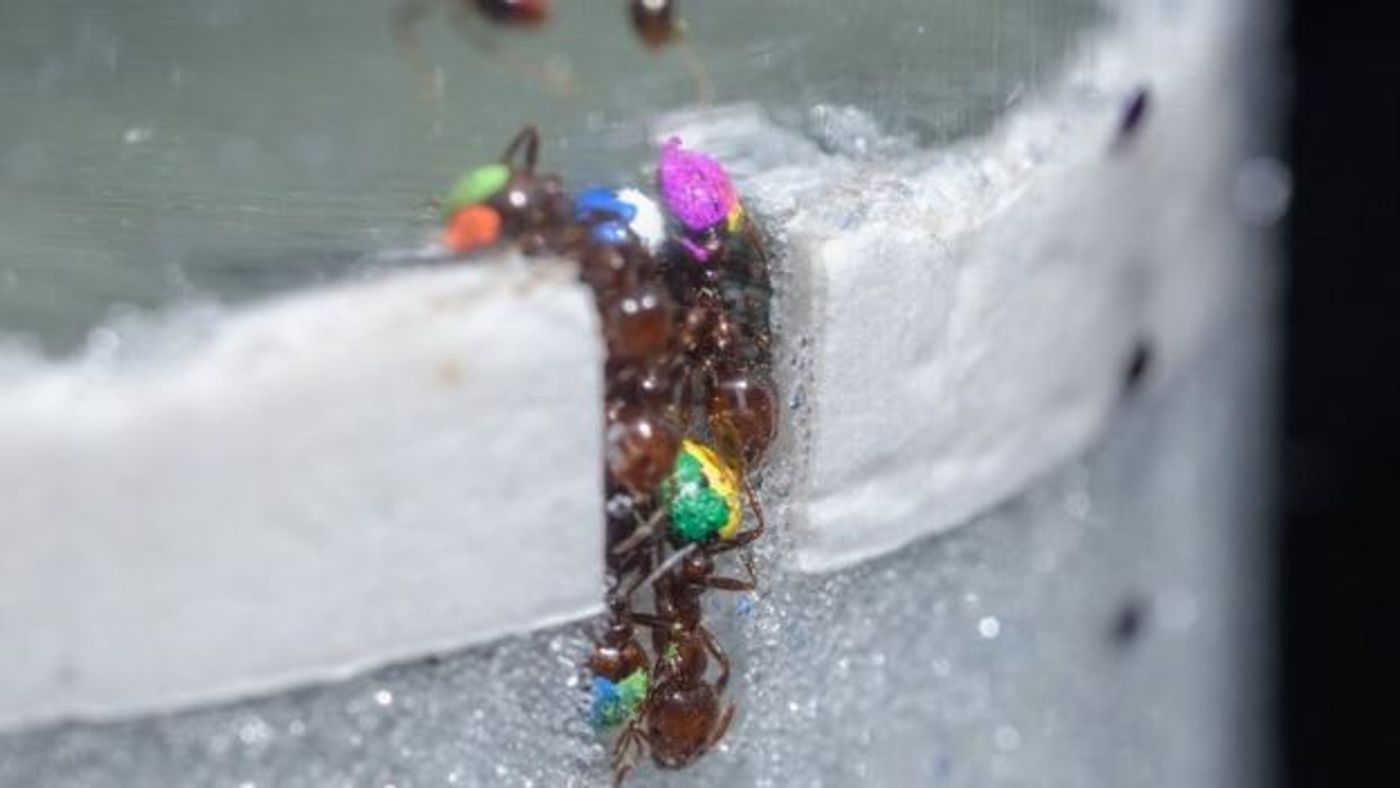Worker Ants Intelligently Regulate Tunnel-Digging Efforts to Avoid Jams
At first glance, any burrows look just like tiny dirt mounds on the ground. But just beneath these inconspicuous little mounds are complex mazes comprised of narrow passageways that the ants use to get from point A to point B.
As you might expect, worker ants spend a lot of time digging these tunnels for their fellow ant brethren to navigate. But ant colonies almost never put their entire worker labor force to work at one given time to craft them.
Image Credit: Rob Felt, Georgia Tech
Researchers have long wondered why ant colonies limit the number of worker ants that contribute to large digging projects at any given time, but a study published in the journal Science this week seems to bring some clarity to the matter.
The study involved careful analysis of worker ant behavior inside of an invasive red ant burrow. The researchers paid particular attention to how the worker ants responded to changes, and they made everything easier to follow by color-coding the worker ants’ abdomens with oil-based paints to discern them from one another.
"We painted the abdomens of ants with oil-based markers and by monitoring which ants showed up in the tunnel, we found that in fact about 30% of the ants in a group did about 70% of the work, because they came to the tunnel more often and they excavated more pellets," explained Prof. Daniel Goldman from the Georgia Institute of Technology’s School of Physics.
"We wanted to know why only about 30% of ants were excavating, and to understand how basic laws of physics might be at work."
Related: These ants 'explode' to protect their colonies
It quickly became evident that the ants distributed the work unfairly among the workers. Most of the work was performed by just 30% of the colony’s worker ants, while the rest stood idly by and did practically nothing.
The findings prompted curiosity, and so the researchers began removing some of the colony’s most laborious worker ants from the workforce. Within almost no time at all, the colony filled those empty spots with replacement workers and sustained the near-30% worker threshold.
As it would seem, limiting the number of active diggers boosts productivity by preventing traffic jams in those confined burrows. If the ants had employed additional diggers, then worker ants would be getting in each other’s way, and this would slow things down substantially.
"We found a functional, community benefit to this seeming inequality in the work environment," Prof. Goldman added. "Without it, digging just doesn't get done."
Related: Beware of the dangers involving floating red ant colonies during floods
To validate their suspicions, the researchers employed computer models and task-oriented robots in the lab to better understand how this ‘lazy’ work ethic might perform under various circumstances. Surprisingly, even the robotic models delivered similar results. Having fewer workers reduced jam occurrences and maintained constant productivity levels.
As the researchers note, understanding these complex work processes is essential because it could translate well to other real-world applications. That said, additional research into the matter could benefit humanity in several ways.
Source: Georgia Tech via BBC, Science









